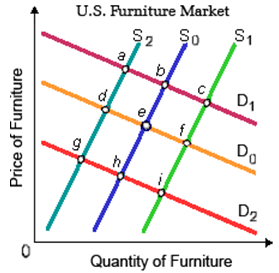Assume that in the short run, raised globalization has caused the U.S. furniture market to attain a temporary equilibrium at point e upon S0D0, although most U.S. furniture manufacturers are experiencing economic losses. When the American furniture industry adjusted, that market would move in the direction of a new equilibrium at: (i) point a. (ii) point b. (iii) point c. (iv) point d. (v) point f.

I need a good answer on the topic of Economic problems. Please give me your suggestion for the same by using above options.